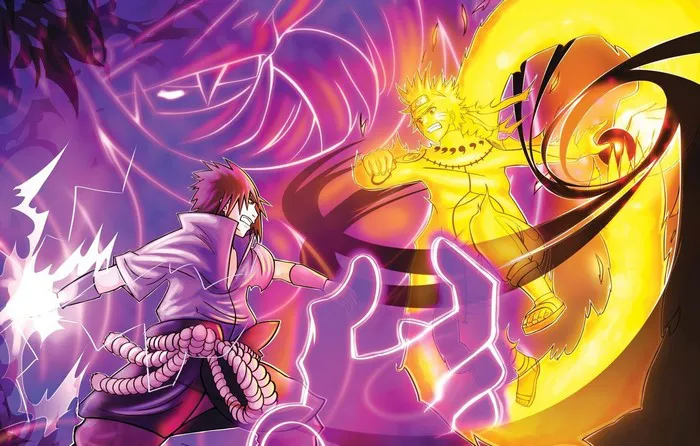In the vibrant world of anime and manga, few characters have left as indelible a mark as Naruto Uzumaki. Created by Masashi Kishimoto, Naruto first emerged in 1999 in the pages of Weekly Shonen Jump and quickly captured the hearts of readers worldwide. What began as a story of an underdog ninja with dreams of becoming a Hokage evolved into an epic saga of friendship, perseverance, and the pursuit of peace. This article delves deep into the tale of Naruto Uzumaki, exploring its themes, character development, impact on popular culture, and enduring legacy.
The Beginnings: Origins and Early Development
Naruto Uzumaki, the titular character, was introduced as a young orphan living in the Hidden Leaf Village, known as Konoha. From the outset, Naruto faced ostracism and loneliness due to being the vessel for the Nine-Tailed Fox, a powerful and malevolent creature that once threatened the village. This setup laid the foundation for Naruto’s relentless pursuit to prove himself and earn the respect of his fellow villagers.
Kishimoto’s storytelling prowess shines in the early arcs of Naruto, where themes of isolation, identity, and ambition are prominently featured. Naruto’s journey is not just about physical prowess but also about emotional growth and acceptance. His determination to become the Hokage, the leader of the village, symbolizes his desire to be acknowledged and to protect those he cares about.
Themes of Friendship and Bonds
Central to Naruto’s narrative are the relationships he forms with his peers, particularly Sasuke Uchiha and Sakura Haruno, his teammates in Team 7. Sasuke, driven by a desire for vengeance, becomes Naruto’s rival and later, a complex antagonist. Their intertwined destinies serve as a narrative backbone, exploring themes of rivalry, loyalty, and the consequences of choices made in pursuit of power.
The bonds Naruto forges extend beyond Team 7 to encompass a larger circle of friends and mentors. Characters like Kakashi Hatake, Naruto’s enigmatic yet caring sensei, and Jiraiya, Naruto’s eccentric but wise mentor, play pivotal roles in shaping his development. These relationships deepen throughout the series, highlighting the importance of camaraderie and support in overcoming adversity.
The Path to Hokage: Trials and Growth
Naruto’s journey is marked by numerous trials and challenges that test his resolve and ideals. From participating in the Chunin Exams, a prestigious ninja tournament, to confronting formidable adversaries such as Orochimaru and Pain, Naruto consistently demonstrates his growth as a ninja and as a person. Each arc showcases his evolving skills, strategic thinking, and unwavering determination to protect his loved ones.
The concept of the Hokage, a title Naruto aspires to, represents more than just leadership—it embodies sacrifice, responsibility, and the willingness to safeguard peace at any cost. Naruto’s pursuit of this goal is a testament to his growth from an impulsive outsider to a respected hero whose actions inspire those around him.
See Also: tallest person in naruto
The Impact of Naruto on Popular Culture
Since its debut, Naruto has become a cultural phenomenon, influencing anime and manga enthusiasts worldwide. Its compelling narrative, rich character development, and thematic depth have resonated with audiences of all ages. The series’ success has spawned a vast multimedia franchise, including anime adaptations, films, video games, and merchandise, further cementing its place in popular culture.
Naruto’s enduring popularity can be attributed to its universal themes of perseverance, friendship, and the quest for identity. The character-driven storytelling and dynamic action sequences continue to captivate new generations of fans, ensuring Naruto’s legacy lives on beyond its initial serialization.
Legacy and Continued Relevance
Even after the conclusion of its original manga run, Naruto’s legacy endures through its sequel series, Boruto: Naruto Next Generations, which follows the adventures of Naruto’s son, Boruto Uzumaki. The sequel explores themes of generational conflict, parental expectations, and the legacy of previous heroes. Naruto himself plays a pivotal role as both a father and a mentor, imparting lessons learned from his own experiences onto the next generation of ninja.
Beyond the narrative continuation, Naruto’s impact can be seen in the broader landscape of storytelling. Its influence on the genre of shonen manga and anime is undeniable, inspiring creators to explore similar themes of friendship, determination, and personal growth in their own works. The characters of Naruto Uzumaki and his companions remain iconic symbols of resilience and hope, resonating with audiences seeking narratives that blend action with profound emotional depth.
Conclusion
In conclusion, the tale of Naruto Uzumaki transcends its origins as a manga and anime series to become a cultural touchstone. Through its compelling characters, thematic richness, and resonant storytelling, Naruto hasleft an indelible mark on the hearts of fans worldwide. From its humble beginnings to its status as a global phenomenon, Naruto’s journey—from outsider to hero, from loneliness to belonging—remains a testament to the power of perseverance and the bonds of friendship. As we continue to revisit and celebrate Naruto’s legacy, we are reminded of the enduring power of stories to inspire, entertain, and unite us all.

